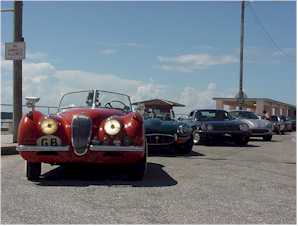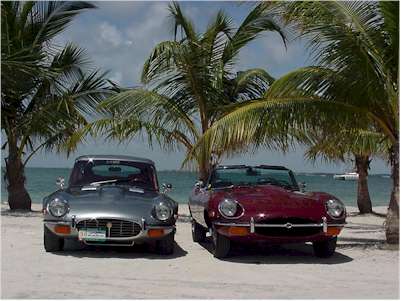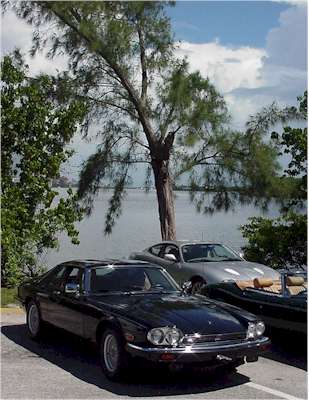|
|
The Spirit
of its Ancestor...
|
When the XK8 was launched in 1996, The Spirit of its
Ancestor was the slogan used by Jaguar in many ads and press releases.
Indeed, it wasn't just another new design hitting the market but the
direct result of half a century of sports car heritage including cars
which were always among the most advanced, best performers and the most
exciting to drive.
 1949 : the XK120 1949 : the XK120
When Jaguar launched its new XK120 sports car in 1949, it offered
performance unheard of at the time. Powered by the all new XK engine,
a powerful straight 6 design that was going to be at the heart of Jaguars
for decades to come, it drew its name for its top speed : 120 mph. A
magic number that few cars could reach, especially road cars, yet the
Jaguar could do it and for a reasonable price.
Originally hand built as a showcase for the XK engine
while the saloon it was meant for was completed, the car turned out
to be so successful that Jaguar had to build production tools for the
body panels after orders exceed expectations.
Throughout the 50's the XK120 was refined, gaining horsepower,
disc brakes and more as it evolved into the XK140 and the XK150. Racing
derivative of the car, the C-types and D-types dominated the tracks
including 5 wins at the prestigious 24 hours of Le Mans
1961 : the E-Type
In the late 50s, Jaguar started development of an all new and
revolutionary sports car. If the curves, XK engine and long bonnet were
familiar and reminiscent of the racing D-type, other features were on
the edge of technology such as an independent rear suspension and steel
monocoque body with engine subframe.
Just in time for the 1961 Geneva Auto show, a single prototype
was driven from the factory to Geneva for the official presentation
to the press. The E-type was about to become one of the most famous
sports cars ever built and an icon of the 60s. Powered by an improved
version of the same XK engine introduced in 1949, the E-type had a top
speed of 150 mph, superior handling thanks to an all new independent
rear suspension, and stunning looks. Creature comfort were also present
such has leather seats, heater and ventilation, etc...
Like it's predecessor the car was refined during the following
years as the needs and demands of consumers changed and they started
demanding more comfortable cars. The E-type evolved during the 60s in
the early 70s with longer wheelbase version, 2+2 coupe configuration,
automatic transmission, improved interior, power steering and air conditioning.
The last version, the series 3 introduced in 1971, featured an all new
V12 engine that allowed the car to recover some of the performance lost
with the late 60s tightening emission control.

1975 : the XJS
In the early 70's, as the E-type's design was showing its 50s
origin and sales started to slow down, it was time for a change and
the all new Jaguar sports car was no longer a pure sports car but a
GT, a Grand Tourer designed to cruise effortlessly and in comfort. Powered
by the same V12 engine which was in introduced in the series 3 E-type,
it was a comfortable, luxurious, powerful smooth car which turned out
to be Jaguar's longest lasting design despite many enthusiast original
skepticism.
Offered originally as a 2+2 coupe, many versions were
proposed in the 21 years the XJS was produced, including convertibles,
6 cylinder models and limited edition sports V12 celebrating Jaguar
victories at Le Mans in the late 80s.
When Jaguar removed the XJS from its line in late 1995,
automobile enthusiasts knew the shoes would be hard to fill. Yet, once
again, Jaguar came through with a car with a car featuring advanced
technology, stunning styling, luxury and performance : the XK8
|

